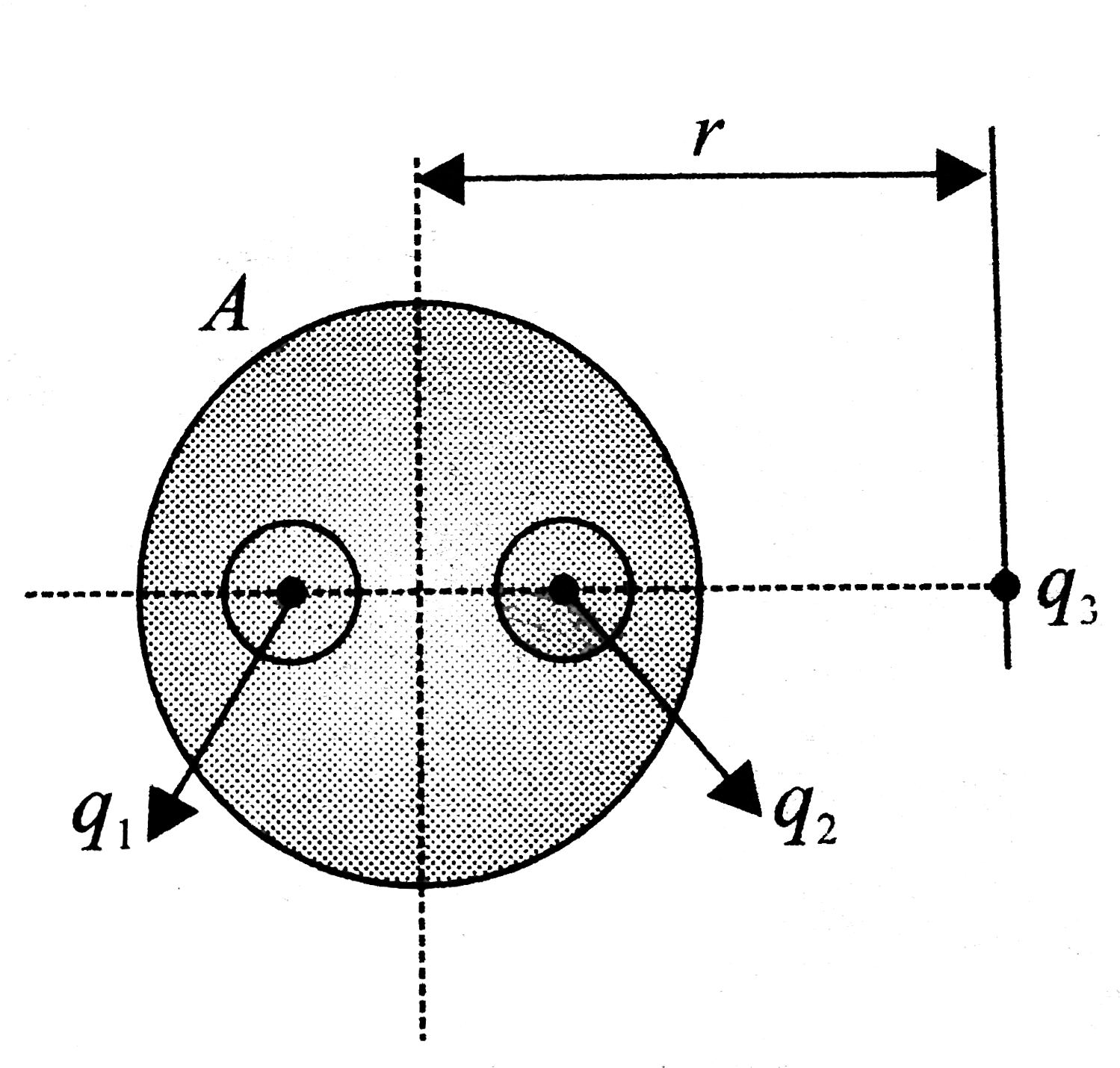A thin conductor rod is placed between two unlike point charges +q1,and−q2. Then

Due to charge induced on the rod AB the point charge +q1, will be acted upon, in addition to the point charge −q2, by the induced charges formed at the ends of the rod.
The total force acting on the charge +q1, will increases, as compared to the case without rod.
On q1 attractive force exerted by the +ve charge induced at the end B.
None of these
The correct Answer is:A, B
Topper's Solved these Questions
- ELECTROSTATICSBOOK - AAKASH SERIESCHAPTER - ELECTROSTATICSEXERCISE - PRACTICE SHEET (EXERCISE - I COULOMB.S INVERSE SQUARE LAQW) (LEVEL - II (ADVANCED LINKED COMPREHENSION TYPE QUESTION)
3 Videos
- ELECTROSTATICSBOOK - AAKASH SERIESCHAPTER - ELECTROSTATICSEXERCISE - PRACTICE SHEET (EXERCISE - II INTENSITY OF ELECTRIC FIELD) (LEVEL - I (MAIN) STRAIGHT OBJECTIVE TYPE QUESTION)
20 Videos
- ELECTROSTATICSBOOK - AAKASH SERIESCHAPTER - ELECTROSTATICSEXERCISE - PRACTICE SHEET (EXERCISE - I COULOMB.S INVERSE SQUARE LAQW) (LEVEL -I (MAIN) STRAIGHT OBJECTIVE TYPE QUESTION
5 Videos
- ELECTROMAGNETICSBOOK - AAKASH SERIESCHAPTER - ELECTROMAGNETICSEXERCISE - ADDITIONAL EXERCISE
6 Videos
- ELEMENTS OF VECTORSBOOK - AAKASH SERIESCHAPTER - ELEMENTS OF VECTORSEXERCISE - QUESTIONS FOR DESCRIPTIVE ANSWERS
9 Videos
Similar Questions
A thin conductinrod AB is introduced in between the two point charges +q1andq2 as shown in figure.For this situtation mark the correct statement (s).

View SolutionElectric force between two point charges q1 and q2 at rest is F. Now is a charge −q1 is placed next to q1. What will be the (a) force on q2 due to q1(b) total force on q2 ?
View Solution
Knowledge Check
The electrostatic force between two point charges q1 and q2 at separation r is given by F=k.q1q2r2. The constant k
ADepends upon system of units onlyBDepends upon medium between the chargesCDepends on both 1 and 2DIs independent of both 1 and 2A spherical conductor A contains two spherical cavities as shown in Fig.2.127. The total charge on conductor itself is zero . However , there is a point charge q1 at the center of one cavity and q2 at the center of the other cavity . Another charge q3 is placed at a large distance r from the center of the spherical conductor.

If q1 is displaced from its center slightly (being always inside the same cavity ), then the correct representation of field lines inside the same cavity isA B
B CThere will be no field lines inside the cavity.D
CThere will be no field lines inside the cavity.D
Two small conductors A and B are given charges q1andq2 respectively. Now they are placed inside a hollow metallic conductor C carrying a charge Q. If all the three conductors A, B and C are connected by a conducting wire as shown, the charges on A,B and C will be respectively :
 Aq1+q22,q1+q22,QBQ+q1+q23,Q+q1+q23,Q+q1+q23Cq1+q2+Q2,q1+q2+Q3,0D0,0,Q+q1+q2
Aq1+q22,q1+q22,QBQ+q1+q23,Q+q1+q23,Q+q1+q23Cq1+q2+Q2,q1+q2+Q3,0D0,0,Q+q1+q2
A spherical conductor A contains two spherical cavities as shown in Fig.2.127. The total charge on conductor itself is zero . However , there is a point charge q1 at the center of one cavity and q2 at the center of the other cavity . Another charge q3 is placed at a large distance r from the center of the spherical conductor.

If q1 is displaced from its center slightly (being always inside the same cavity ), then the correct representation of field lines inside the same cavity is
View SolutionA charge Q is placed at the centre of the line joining two point charges +q and +q as shown in figure. The ratio of charges Q and q is

View SolutionA charge Q is placed at the centre of the line joining two point charges +q and +q as shown in figure. The ratio of charges Q and q is

View SolutionTwo small conductors A and B are given charges q1andq2 respectively. Now they are placed inside a hollow metallic conductor C carrying a charge Q. If all the three conductors A, B and C are connected by a conducting wire as shown, the charges on A,B and C will be respectively :

View SolutionTwo similar point charges q1andq2 are placed at a distance r apart in the air. The force between them is F1 . A dielectric slab of thickness t(<r) and dielectric constant K is placed between the charges . Then the force between the same charge . Then the fore between the same charges is F2 . The ratio is
View Solution
